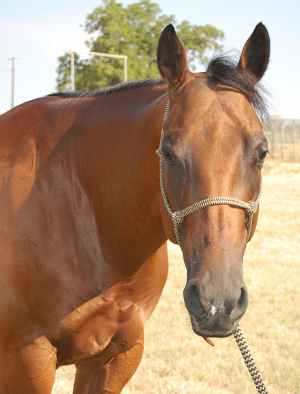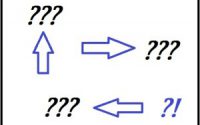But I’m a Horse Redux 2019
Editor’s note: I just completely re-wrote my original “But I’m a Horse!” post from 2014 after trying to interject historical updates after the International criteria change in 2017. I felt that made it jump around too much and was too confusing, so the following is a complete re-write of the original 2014 post.
Aka But I’m a Horse Redux 2019.
~~~~~~~~~~~~~~~~~~~~~~~~~~~

So way back when I first hatched this blog in 2014 I was running around hopping up and down shouting (figuratively speaking) “But I’m a horse! But I’m a horse!”
Huh? What? What are you blathering on about now Jan? I’ll splain (explain), now, Ricky…
The saying goes that in medical school, doctors are taught that “upon hearing hoofbeats, think and diagnose the more common possibility, horses, not the more rare possibility, a zebra”. (At least in the western world.)
So the Ehlers-Danlos syndromes community co-opted the zebra as their mascot and “brand” over 20 years ago since we were considered rare by prior standards and guidelines.
Then I came along, and fell down the rabbit-hole in 2012 and got diagnosed after my massive sudden onset cascade that left me shattered and unable to walk so quickly helping me hit the medical radar finally. (Read: be diagnosed with anything but depression finally as a woman, sigh.)
And upon becoming acquainted with the many manifestations of EDS, and becoming a support group leader, I began to feel it might not be very rare at all. And no, not just because I met so many people I suspected at the support group meetings, but outside of them!
At least not the most common form both then and now: hypermobile type EDS or hEDS. Formerly called EDS type III which fell out of use in 1997, though some still stubbornly persist, smile. Hold that thought.
I started noticing signs of it in almost all the ladies in my therapy pool sessions. Almost all said they had “fibro”, but as I observed them, I saw many other signs. (Near sighted, visible veins, scars, hunched and sway backs, more.)
Yet, most resisted this information, as they felt that what I had was too rare (I could barely walk with two Lofstrand crutches when I wasn’t in my wheelchair back then), and they had fought so hard for their fibromyalgia diagnosis they were loathe to give it up.
“Besides”, they all said, “I’m not very bendy”. Oh no? Let’s take a look. And sure enough: all had mild or more signs of hypermobility even if not always globally, or not very much if so. (Though some were bendier than me!)
The old diagnostic criteria
We were still using the (now obsolete!) Brighton (with an “r”) Diagnostic Criteria to diagnose hEDS at the time, as well as JHS and HMS (Hypermobility Syndrome) in England where we weren’t all on the same page.
And I realized that one reason people thought they didn’t pass is that they would read just the first two lines, that is, just the major criteria, and as soon as they didn’t pass one of those, they stopped and assumed that was it: they didn’t have it. (ADHD much, anyone? We’re famous for leaping to premature conclusions, ahem!)
But had they continued reading the criteria fully and thoroughly, they may well have agreed with me about their likely passing them. Because I knew that most showed many signs of the 8 minor criteria no one ever got to. And you only needed 4 of those to pass, even without a diagnosed relative.
So I became obsessed with showing how the Brighton (with an “r”) diagnostic criteria allowed for people to pass pretty darn easily if you read it backwards from the bottom up, leaving the 9 pt bendy Beighton (with an “e”) scale (which was just part of the Brighton criteria) for last.
It did not help that the two names are off by only one letter, no! Ack!
So I started running it backwards on people, from the bottom up starting with the minor criteria. You could pass if you checked off 4 or more of these minor criteria. (Remember, this was using the old outdated Brighton criteria.)
Here are the 8 (now outdated!) minor criteria listed in REVERSE ORDER (so you can just read them from top to bottom again) for reference:
8 REVERSED MINOR CRITERIA (4/8 bolded have nothing to do with the joints, 7/8 in italics have nothing to do with being at all flexible or hypermobile since many are no longer, and some never are!) Read top down here:
- Varicose veins or hernia or uterine/rectal prolapse.
- Eye signs: drooping eyelids or myopia or antimongoloid slant (almond shaped eyes).
- Abnormal skin: striae (stripes), hyperextensibility (stretchy), thin skin, papyraceous scarring.
- Marfanoid habitus (tall, slim, span/height ratio >1.03, upper: lower segment ratio less than 0.89, arachnodactyly [positive Steinberg/wrist signs].
- Soft tissue rheumatism. > 3 lesions (e.g. epicondylitis, tenosynovitis, bursitis).
- Dislocation/subluxation in more than one joint, or in one joint on more than one occasion.
- Arthralgia (joint pain) > 3 months in one to three joints or back pain (> 3 months), spondylosis, spondylolysis/spondylolisthesis.
- A Beighton score of 1, 2 or 3/9 (0, 1, 2 or 3 if aged 50) (Hypermobility scale)
Score one point for each line you pass any part of. 8 total possible.
Again – note that the above outdated list is already reversed for you, so you can read them from the TOP DOWN. The original are here.
Almost everyone I checked out this way that I suspected passed with flying colors scoring 6 or 7 out of the 8 possible (much more than the 4 needed to pass), plus most also passed the Beighton (with an “e”) 9 pt scale as well. (That’s the 8th minor criteria when working from the bottom up as I was.)
So, many scored a 7 or even 8 out of 8 possible minor criteria. That’s a pretty solid result IMHO.
So I was then on a mission to show how EDS wasn’t really rare, but just rarely diagnosed. At least not hypermobile EDS anyway.
You know, the one with no known genetic marker or markers found yet, right? We’re still SNP (genetic marker) hunting, only now we’re doing so in earnest, finally, yay. (Thank you Anonymous donor!)
The new 2017 not so rare diagnostic category
However, the Brighton (with an “r”) Diagnostic criteria were retired in 2017, leaving us with only the Beighton (with an “e”) 9 pt hypermobility (bendy) scale left as part of the newly tightened hEDS criteria.
Which the powers that be intended to call rare again, along with the other forms of EDS. So, you may go ahead and call yourself a medical zebra if you have a form of EDS officially diagnosed using the new 2017 International criteria, especially, as well as the under older criteria. And especially if you have any of the other forms besides the hypermobile type.
We just embarked on this year’s Ehlers-Danlos Syndromes and Hypermobility Spectrum Disorders Awareness Month in May.
And I’m super keen that we stop calling the new diagnostic category of Hypermobility Spectrum Disorders rare now too, just rarely diagnosed!
Start thinking horses…

Translation: I don’t feel like I’m a medical zebra as the saying goes, but rather, a much more common but unrecognized yet “medical horse” IMHO, at least in the western world where this analogy was born.
And the collection together with the likely related HSDs as a whole is definitely not rare!
In fact, the 2017 literature cites the combination of hEDS and the new HSDs may run as high as 3.4%. (Tinkle, Castori, Berglund et al, 2017) That’s far from rare TYVM. And we’re really only just guessing, since we have no good studies or epidemiology on this!
And I personally now look like I “caught” hEDS when I fell apart so badly and finally got diagnosed in 2012, only to be “cured” of it when the diagnostic criteria changed in 2017! Of course that’s not possible – it’s genetic, so I inherited it. But I hope you get my point.

Just like the heavenly body Pluto, I haven’t changed a spot. They just reclassified Pluto down to a dwarf planet arbitrarily in 2006 without consulting Pluto. There’s even discussion it may rejoin the club of Full Planets any day now.
But I lied about not changing a spot. Because I did proceed to stiffen a bunch with age and advancing arthritis and wear and tear over the last seven years. (Tight hamstrings and more anyone? Oh yeah.)
That is to say, I did “change a spot” and stiffen in place, even though I didn’t change my “orbit” so to speak.
I was much bendier in 2012 than 2017 and especially more now in 2019, and I was much much bendier than that in 1976 as a young pipsqueak. (Just ask my family.) I could have been a “fourth Ross Sister” in their “Solid Potato Salad” number, if you will, no kidding. (No wonder I started to have lower back pain in my 20s!)
My point is, while the powers that be are intent on calling the forms of EDS all rare (whence the 1 in 5000 designation for hEDS), they aren’t able to pin down the true prevalence of the forms of HSD or hEDS yet. (No one can, yet, truly. It was only just recently “invented” and recognized.)
And we obviously don’t have anywhere near enough numbers from any studies to know or tell just how common it is, though my unscientific opinion is far from rare. I personally find we are highly attracted to each other myself, so I think our kids get diagnosed the fastest.
But again, that’s just my unscientific WAG.
And further, both the categories of hEDS and HSD are still catch-all bins for anyone who shows lots of signs of a connective tissue disorder that looks like a form of EDS, but either isn’t bendy enough, or has enough of the right (chosen) issues with their tissues to pass the very arbitray criteria that we chose. But doesn’t yet match any other similar heritable connective tissue disorder (CTD). (E.g. Marfan Syndrome, Stickler Syndrome, OI, Loeys-Dietz, etc.)
Meaning, there will be some people who have a form of EDS we haven’t even nailed down yet or “discovered” and described, but who don’t match any of the other 13 rare types well enough to be those, so we call them hypermobile EDS still too. Even though they obvious have something really rare or different. (I have a friend like this.)
And since everyone seems to be intent on thinking this is rare, I’ll probably cave and wear zebra-themed things this month to go along. But my inner horse is bucking and dying to get out.
And I don’t think I’m alone in this thinking anymore… there’s a small but growing movement on Twitter to ditch the zebra there as well for this and other reasons. (Some think it’s childish lending to doctors dismissing us.)
But I think it will be a heavy lift after working SO hard to recognize the rarity of the condition. Now you want to get people to think it’s common, when it’s so rarely diagnosed?
Well… yes. Yes we do. How that will come to pass, who knows. I’m resigned to sporting zebra themes for now myself.
And however we “brand” this condition, I just care that we stop calling the collection of hypermobility spectrum disorders and forms of EDS as a whole rare.
Just rarely diagnosed. Join me.


Hear hear! How come the medical professionals can be SO blind to EDS when it’s all around them? Maybe it’s just too difficult?
Why I write so much! Trying my darnedest to prise open medical minds and hearts… glad this resonated with you. Thanks for joining the chorus too. We are literally the frequent flyers IN medical offices!! They just don’t ever look outside of their narrow focus to see the bigger picture and “connect the issues with our tissues”.
One day… 😉